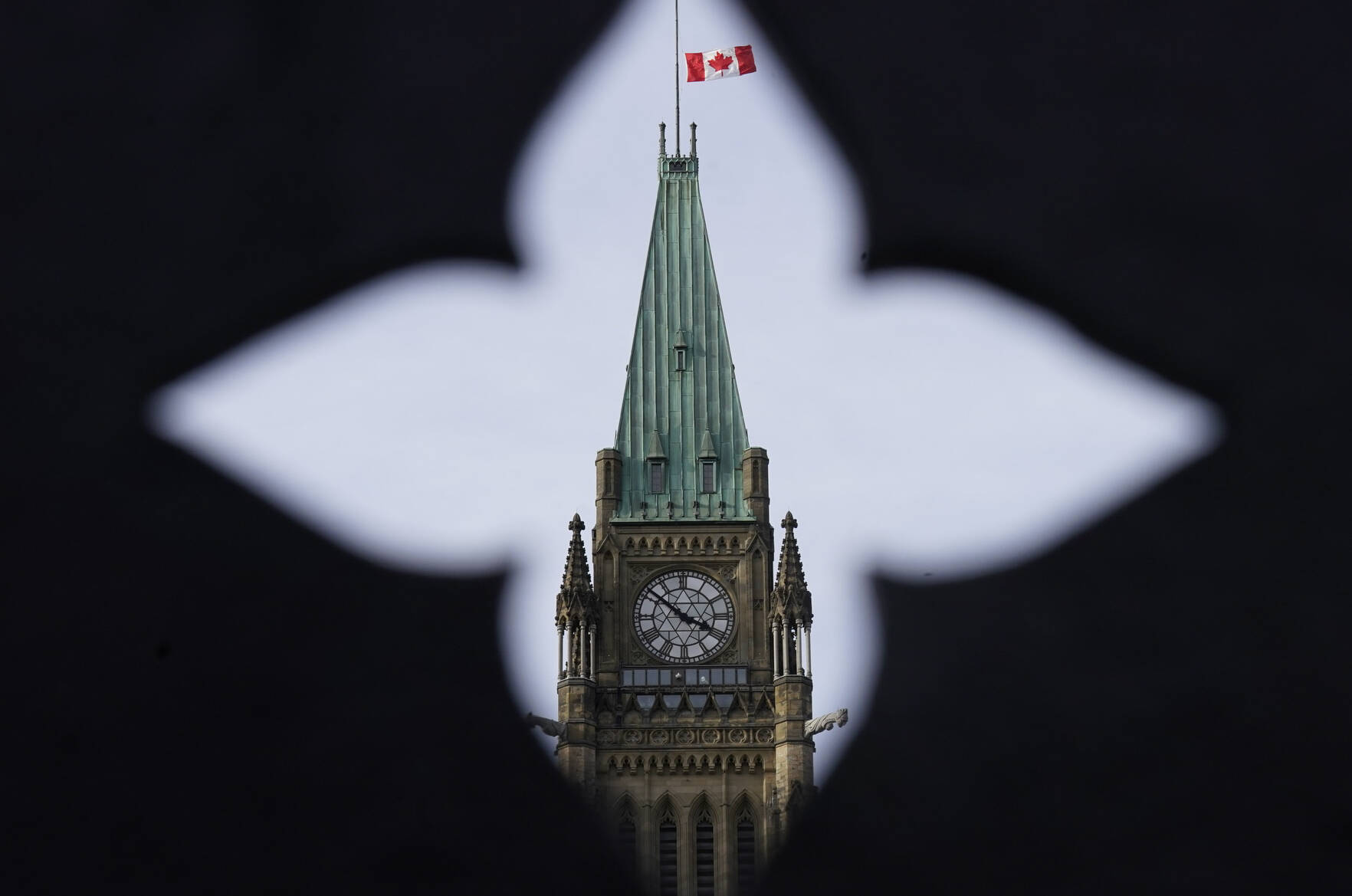Documents show some residential school survivors told Ottawa they didn’t want to “wear” a decision to raise the Canadian flag, as the government spent months mulling how to lift the Maple Leaf from half-mast.
Hoisting the flag became a source of debate last year after it was lowered for months following the discovery of what were believed to be the remains of 215 children at the former Kamloops residential school site in British Columbia last May.
Next weekmarks the one-year anniversary of that discovery using ground-penetrating radar by the Tk’emlups te Secwepemc First Nation.
It sent waves of grief, shock and anger through the country. As Indigenous communities reeled and more non-Indigenous Canadians joined them, Prime Minister Justin Trudeau ordered the flags lowered at all federal buildings, including the one atop the Peace Tower.
By June, federal officials were trying to figure out the timing to raise the flag, reaching out to Indigenous leaders and drafting up options.
“This is the longest time in Canadian history that flags have been at half-mast,” Crown-Indigenous Relations officials wrote in a briefing note released to The Canadian Press under access-to-information legislation.
How long the flag remains lowered is typically dictated by a strict set of rules. But when the federal government lowered it to honour Indigenous children who died and disappeared from the 140-year-long residential school system, the timeline for lifting it was not clear.
Ottawa was working to return the flag to full-mast ahead of Remembrance Day, documents show, which is what ultimately happened. The documents say survivors and those in the country’s national Indigenous organizations saw the need to raise the flag in order for it to be lowered on Nov. 8, Indigenous Veteran’s Day, and Nov. 11.
Among those consulted was the National Centre for Truth and Reconciliation’s survivors’ circle. The group met last fall with Carolyn Bennett, the former federal Crown-Indigenous Relations minister before she was named to a new portfolio.
“Several participants mentioned that they did not want Canada to use this engagement to justify the raising of the flag to full-mast,” officials said in a summary of the meeting.
“They did not want to ‘wear’ that decision,” the summary said, adding Bennett signalled she understood and saw how not everyone agreed.
“Some said that they were not ready to see the flag go up to full-mast, others indicated that Canadians still needed to better understand why the flag was lowered.”
Officials recorded differing opinions on the national symbol and how the country planned to mark the finding of more unmarked graves.
“Inuit Tapiriit Kanatami officials reinforced the critical need to honour all the lost children (more than 6,000) and to sustain public awareness of the tragedy of residential schools,” the documents say.
“Officials from the Metis National Council also offered the suggestion that the flag be lowered to half-mast for a week each time a new residential school burial discovery is made.”
In addition, officials said the organizations felt even though raising the flag was complicated, the issue was one that “the Canadian government will need to resolve.” They also believed in the need for another “symbolic recognition at the national level” as a replacement if the flag were hoisted.
The office of the current Crown-Indigenous Relations Minister, Marc Miller, said in a statement it is working with the House of Commons, Senate Speakers’ Offices and other MPs to hoist the National Centre for Truth and Reconciliation’s survivors flag on Parliament Hill in June, which is Indigenous history month.
It also plans to lower the Canadian flag every Sept. 30, the National Day for Truth and Reconciliation.
The Cowessess First Nation near Regina discovered 751 unmarked graves last year. Officials noted that Chief Cadmus Delorme “identified that this is a historic time for Canada” and “that with the number of residential schools, this issue will be present for years to come.”
Indigenous groups also urged governments to take meaningful action on reconciliation, and not leave it at symbolic gestures, the documents show.
Chief Harvey McLeod of the Upper Nicola Indian Band in Merritt, B.C., said recently that more debate is needed about what the flag represents to Indigenous people and Canadians, as opposed to talking how long it should stay lowered or raised.
“I see being more important is us continuing to have the dialogue to correct what was implemented in that plan that was the way to implement the vision of Confederation,” he said. “It was the vision of the salvation of us savages, us Indians, to incorporate us into general society.”
“We really have to roll up our sleeves and find a way of how we can be inclusive of people like myself.”
Congress of Aboriginal Peoples National Vice-Chief Kim Beaudin said he’s more concerned with justice for survivors than symbolic gestures from Ottawa.
“Quite honestly, we’re not really treated as Canadians either, right? Full-(fledged) Canadian citizens in our own country,” he said.
“A lot of times we’re treated like foreigners.”
One survivor of the Kamloops residential school said any gesture from the Canadian government on the flag is meaningful.
“Any recognition that Canada offers is good,” said Garry Gottfriedson, a 69-year-old poet who attended the institution from kindergarten to Grade 3.
“The smallest gestures are good. Any little gesture Canada can offer is a step towards healing.”
—Stephanie Taylor, THE CANADIAN PRESS, with files from Dirk Meissner
RELATED: Unmarked graves finding triggered Canada’s year of reckoning over residential schools

